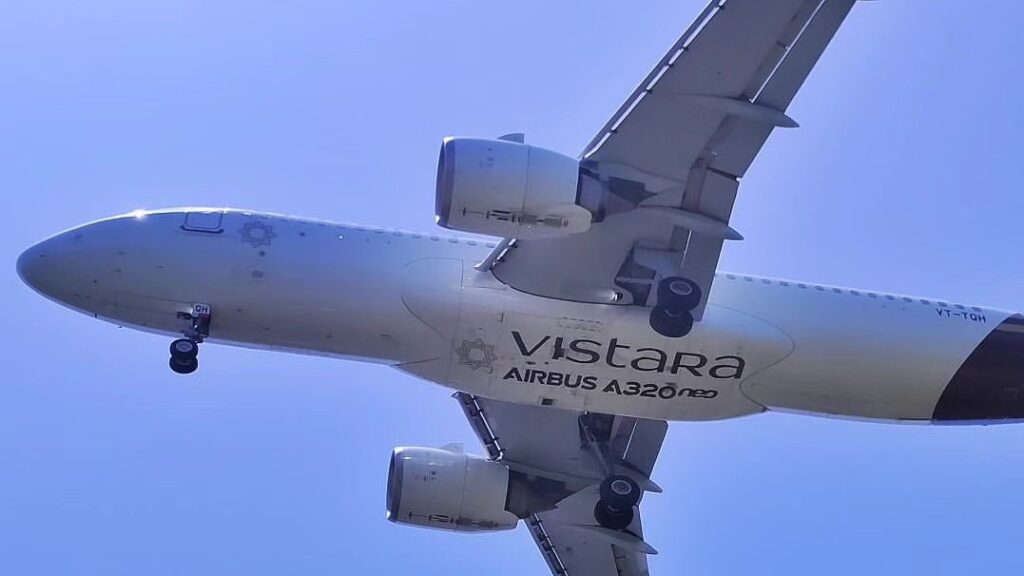
India’s luxury airline Vistara will operate its final flight on Monday, marking the end of its nine-year journey as a full-service carrier. A joint venture between Singapore Airlines and Tata Sons, Vistara will merge with Air India, another Tata-owned airline, to form a single, expanded entity with a larger fleet and a broader network. This merger will see Vistara’s operations, including customer service kiosks and ticketing, transferred to Air India, and passengers with existing Vistara bookings and loyalty programs gradually integrated into Air India’s system.
An Air India spokesperson noted that as part of the merger process, the airline is working to upgrade service elements, including meals, service ware, and other in-flight offerings, blending aspects from both airlines. Despite concerns that the merger could lead to a decline in service quality, the Tatas have assured that Vistara’s renowned in-flight experience will be preserved during the transition.
Vistara has built a loyal following thanks to its high ratings for food, cabin quality, and customer service. Many loyalists, branding experts, and aviation analysts have expressed disappointment over the decision to retire the Vistara brand, which was considered a gold standard in Indian aviation. Aviation analyst Mark Martin believes the merger was driven more by financial necessity than strategic growth. He argued that the merger is essentially a way to clean up Vistara’s finances and eliminate its losses, rather than strengthen the airline.
“Air India is being forced to absorb a loss-making airline in a desperate move,” Martin said, adding that mergers are typically meant to consolidate power, not to cover losses.
While both Vistara and Air India have reduced their annual losses by more than half in the past year, the process of merging the two airlines has not been without complications. The airline industry has faced several challenges, including pilot shortages that resulted in numerous flight cancellations. Furthermore, Vistara’s crew has gone on strike over proposed changes to their salary structure, which is being aligned with Air India’s.
Despite the progress in reducing losses, Air India has faced widespread criticism for its service standards, including viral videos showing broken seats and non-functioning in-flight entertainment systems. In response, the Tatas have announced a $400 million (£308 million) program to upgrade Air India’s older aircraft, including a new livery and a complete interior retrofitting. Additionally, they have placed large orders for new Airbus and Boeing planes. However, analysts like Mark Martin contend that the airline’s turnaround efforts are still incomplete, and the merger could further complicate matters.
The merger also raises concerns about the branding. Harish Bijoor, a brand strategist, expressed disappointment that a superior product like Vistara, which had set a high bar for Indian aviation, is being absorbed into Air India. “It’s a big loss for the industry,” Bijoor told the BBC, adding that it will be a monumental challenge for Air India to replicate Vistara’s standards. Bijoor suggested that a better strategy would have been to keep Air India and Vistara as separate brands for a few more years while Air India worked on improving its service to match Vistara’s quality.
The branding challenges go beyond the quality of service. Ajay Awtaney, editor of aviation portal Live From A Lounge, noted that communication will be a significant hurdle in the early stages of the merger. “Passengers arriving at airports expecting Vistara flights may find Air India branding instead,” Awtaney said. “Clear communication will be crucial.”
Another obstacle will be the cultural integration between the two airlines. Vistara’s employees, known for their agility and customer service focus, may struggle to adjust to Air India’s more bureaucratic and complex systems. More importantly, the merged entity will need to offer a consistent experience for passengers, despite the differences in service formats and cabin configurations between the two airlines.
While the merger has its challenges, many believe that Vistara’s exit was inevitable, given the realities of India’s competitive aviation market. Air India, a legacy brand with global recognition, could not allow a smaller, premium carrier like Vistara to overshadow its revival efforts. Financially, it makes little sense for the Tatas to operate two loss-making airlines that are in direct competition with each other.
The combined Air India and Vistara entity will be in a stronger position to compete with market leader IndiGo, with a fleet size approaching 300 aircraft and a broader network. An Air India spokesperson emphasized that the merger would make the airline “bigger and better,” allowing for greater cooperation between the two teams rather than competition.
For aviation analysts like Awtaney, there will never be a perfect time to merge the two airlines, and the process had to begin at some point. However, for many loyal Vistara customers, the brand’s retirement marks the third such loss in India’s aviation history, following the collapses of Kingfisher Airlines and Jet Airways.
As Air India attempts to fill the premium carrier gap left by Vistara’s demise, it remains to be seen whether it can successfully meet the high standards set by its former subsidiary. For now, the merger will leave many aviation enthusiasts wondering whether the future of Indian aviation will live up to the promises of its past.








